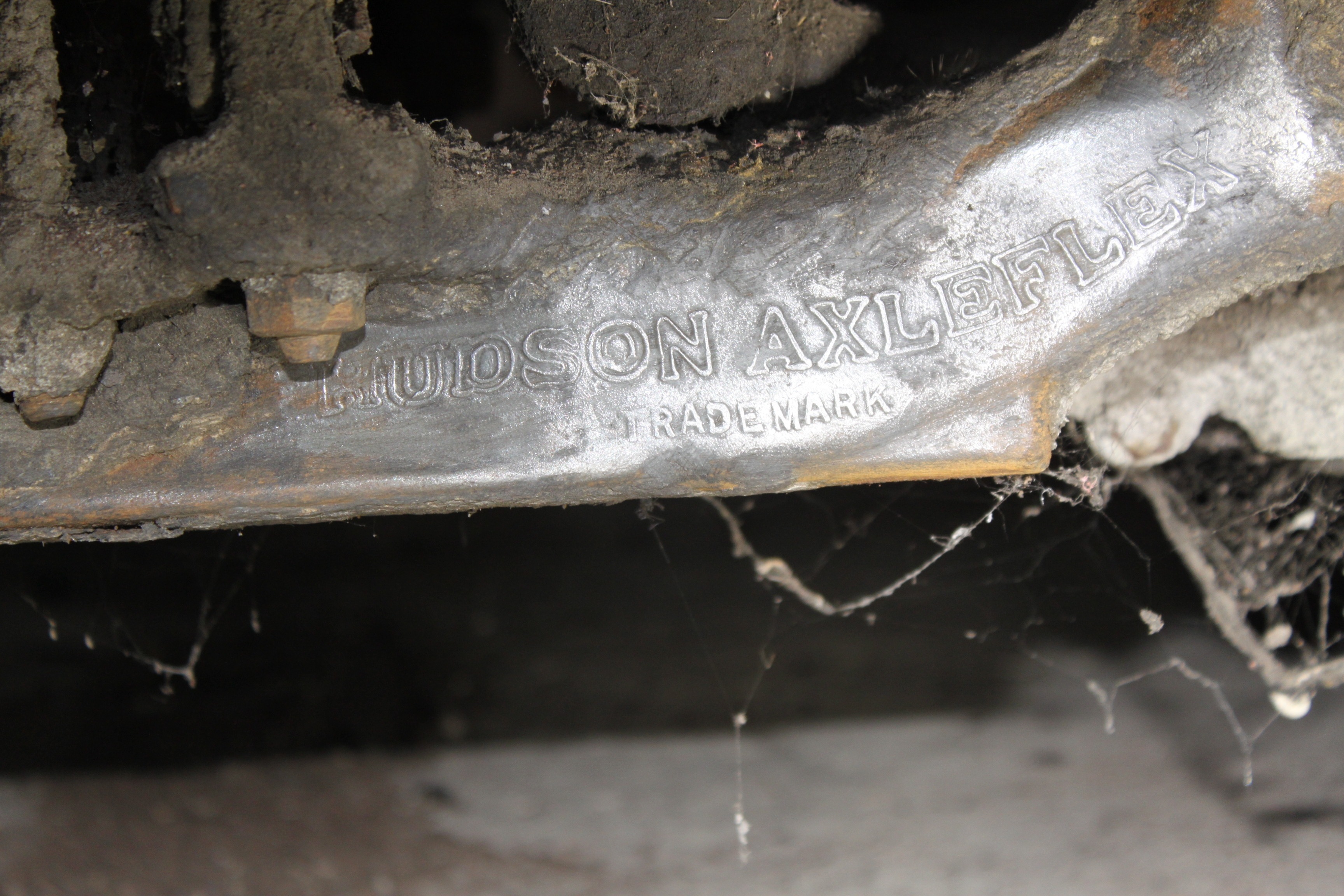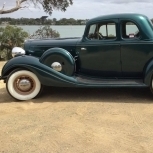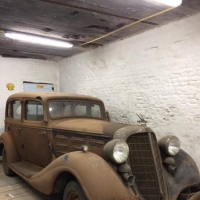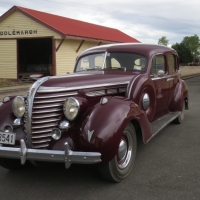1934 Hudson 8 cylinder clutch repair
I am in Australia and have a 1934 Hudson Coupe with a 3 speed and 8 cylinder engine
I drive the car most weeks and love the car
I have to do the clutch and would like to do the recorking my self I have lathes milling machine et so could make tools to compress the cork to get them in cut the cork to size etc
Is the cork any thing special I assume you cant use the rubberized cork used in gaskets and how far should the corks stick above the plate on the new clutch
The car has a baker front end I remade all the steel bushes and 2 solid steel spring hangers this took nearly 2 weeks of machining So I am capable of making things for the car just need some specs and pointing in the right direction
I drive the car most weeks and love the car
I have to do the clutch and would like to do the recorking my self I have lathes milling machine et so could make tools to compress the cork to get them in cut the cork to size etc
Is the cork any thing special I assume you cant use the rubberized cork used in gaskets and how far should the corks stick above the plate on the new clutch
The car has a baker front end I remade all the steel bushes and 2 solid steel spring hangers this took nearly 2 weeks of machining So I am capable of making things for the car just need some specs and pointing in the right direction
0
Comments
-
Baker front end?0
-
The Baker was a option it was sort of a independent front end 2 parallel bars it was really not very long lasting but is what saved this car as by 1960 they could no longer get parts for it and it sat in a museum for 50 years undriven the car only has 87,000 miles on it and is mostly original0
-
That's interesting, I've only heard that front axle called AxleFlex. Lasted 2 years, 34/35.
Many (most?) of the Hudson clutches that get refaced in Australia get done with kevlar, I had my first one done 25 years ago. Les P was the pioneer down here of kevlar Hudson clutches.0 -
Bob the axleflex is what it is I was told it was made by Baker and only for 2 years it was also in other makes as well
It twists the front springs and is only good for about 15 to 20 thousand miles before it needed bushes and pins its all steel to steel
Now the roads are much smoother and I also grease it every 500 to 800 miles and modern grease is much better as well so I will see how it goes
I would rather use cork for the clutch it did work fine I would like to know what thickness to use and what type of cork to get I can make tooling to cut the cork and will make a little press jig to install it through a tapered sleeve and can machine the cork in a lathe once installed to make it all true and aligned just need to know the dimensions used if this is not available well a good old guess with do0 -
There is a few places listed on the Het usa site which repairs clutches. Id get in touch with one of them and pay the mechanic a consultant fee for their time and get the real facts minus the "oh I forgot to mention you need to do this or that first" I did that for an auto electrician and was the best $70 I spent cheers ken0
-
I have found the overall thickness of the cork is to be .210" and read a little of problems with the first fill of oil being absorbed by the cork I just need to know what cork to use that is OK
I am not up to speed on that but think that some wine bottle cork is synthetic I believe I am not sure but would think it may be ok to use I think gasket cork that is rubberized would not be good unfortunately I have a few sheets of that LOL
Hudson would have used raw cork for sure0 -
Hi Freddo, where in Australia are you. I may still have a box of corks that we used to use many years ago before we went the Kevlar process. We used to boil the corks in hot water, mixed with engine oil and then inserted them through a tapered sleeve, we had a special device that Dad made to insert the corks through the sleeve.
my father would compress the plate in a jig for a few days and then machine them off in a lathe to size, very dusty and dirty job.lol Thickness is indeed .210"
I would hate to think how many clutch plates we did over the years working in our workshop. I always advise soaking the finished plate in a dish of ATF Fluid before installing, saving to top up after the corks have absorbed fluid after installation.
By the way is it a 9" or 10" plate.??0 -
My understanding is that medicine corks were used, however, my preference is to go down the kevlar lining route. The kevlar will not stick to the flywheel and pressure plate, lasts longer, and a kevlar wet clutch retains the same smooth operation as if you were still using corks.
https://www.bcafrictionmaterials.com.au/products/woven-roll/
BCA have done a number of 9 & 10 inch clutch plates for Hudson & Terraplane vehicles.
No matter whether you go for corks or kevlar, make sure that your clutch plate has no movement in it.
Is your Hudson green and did you purchase it from the late Clem Smith's auction?
I am not sure if you are aware, but there are three excellent HET Clubs in Aust - Vic, NSW & Qld and there is a lot of Hudson knowledge within the membership.0 -
Hi yes it was Clem Smiths the car was undrivable due to some serous safety issued the Distributer was rusted solid and although was running was in need of a little love and attention I also bought a 1929 large sedan but I think I will sell that I am getting older and it is a long day when you take it out
I am impressed just how well the 1934 drives I just love it and drive it almost every week
Are the kevlar linings glued on or cut and pressed into cork holes
I really am a easy driver on the cars and think corks would see me out I have also found on both cars I when finished driving them for the day I bring the revs to about 1000 rpm with my foot on the clutch turn the motor off and hold the clutch down for about another minute this lets the oil run down over the corks between the flywheel and pressure plate and is reduces the sticking quite a bit if I have not driven the car for say a few months I may start the engine push the clutch in while it warms up a minute or so just turn it of then start it in gear and it is always fine after that
I am down on the Mornington peninsula and will make a tapered fitting tool and will machine the finish plate in a lathe I still have not pulled the clutch out as yet its a job for tomorrow so don't know if it is 9 or 10 inch I am not 100% what went wrong it was strange a while ago I think the clutch slipped but on over run coasting down hill just once or twice but on driving was fine and yesterday just going up a slight hill in top just bang and no drive so it may even be a broken spline or drive plate it still rotated the gear box but not enough to drive0 -
Mon axle flex 1934

0 -
Talk to Geoff Clark about the corks the correct sizes are available from the US Geoff and I re corked the clutch for my 37 Terraplane on his kitchen bench quite a simple process when you see it done. Ive always thought an old book binding press would be great for compressing the corks. RegardsTrevor0
-
By the way Ive done thousands of miles since we did it with no problems. Another friend did his with Kevlar and has had nothing but problems so you never know
0 -
You must use No. 5 corks, and the purest grade, not the ones with lots of wood chips and holes in them. they must be boiled and pushed right in, allowed to dry for at least two days before trimming to 1/8", and then compressing under heat. Must stay in the press for another two days, and finally finished off to 1/16" protuding each side. It does not sound to me like you have a clutch problem, more like a broken axle.0
-
Trevor, over the last 30 years or so of doing Kevlar, we have never encountered any problem, have lost count of how many we have done here in Australia. I would like to know what problem your friend had with the kevlar. Was it the Kevlar or something else.??? My 1942 Hudson was done in Kevlar 30 years ago, never had a problem. Every clutch now done in Australia is done using Kevlar.0
-
Kevlar faced wet clutches are not an experiment, its a well proven technology, its a 50 plus year old well proven technology. Shortly after kevlar came on the market in the mid 60s it was being used as wet clutch facings and its been a success story.
Consider the humble wet clutch forklift, there are hundreds of thousands of them all around the world being worked hard (flogged to death?) day in day out, they all have kevlar clutch facings.
This is why I prefer a kevlar clutch in a Hudson.
I don't mean to be scornful or disrespectful of those who prefer a cork clutch.
0 -
Hi well thanks for the Clutch help BUT I did a bit more looking today I am by myself so put the mobile phone on video under the car and hit the starter the tailshaft spins but no forward movement I pulled the axles out there OK then pulled the diff
The diff has loosened the 6 crown wheel bolts then sheered them off unfortunately it took 2 teeth of the pinion gear funny thing it did not make and noise it was quiet and smooth
Does any one have a crown wheel and pinion or a diff center for sale for a 1934 I do have a crown wheel and pinion for 8 bolt Hudson i assume the next model but it is very different and would not fit0 -
A man in Adelaide has been advertising for the last 15 years in the Victorian HET club newsletter. Try him for a diff centre.0
-
freddo, complete 6 and 8 bolt CWP pumpkins are interchangeable 34 to 47. AFAIK the 6 bolt centre was changed to the 8 bolt centre in late 37, so you are looking for a diff from a dead late 30s to 47 car.
Apparently there is no method of distinguishing between the 6 bolt and 8 bolt centres while they are in the housing, you have to dismantle the diff to find out what you have. The advice about the man in Adelaide is sound.0
Categories
- 36.9K All Categories
- 113 Hudson 1916 - 1929
- 20 Upcoming Events
- 92 Essex Super 6
- 28.6K HUDSON
- 574 "How To" - Skills, mechanical and other wise
- 995 Street Rods
- 151 American Motors
- 178 The Flathead Forum
- 49 Manuals, etc,.
- 78 Hudson 8
- 44 FORUM - Instructions and Tips on using the forum
- 2.8K CLASSIFIEDS
- 608 Vehicles
- 2.2K Parts & Pieces
- 77 Literature & Memorabilia
- Hudson 1916 - 1929 Yahoo Groups Archived Photos





